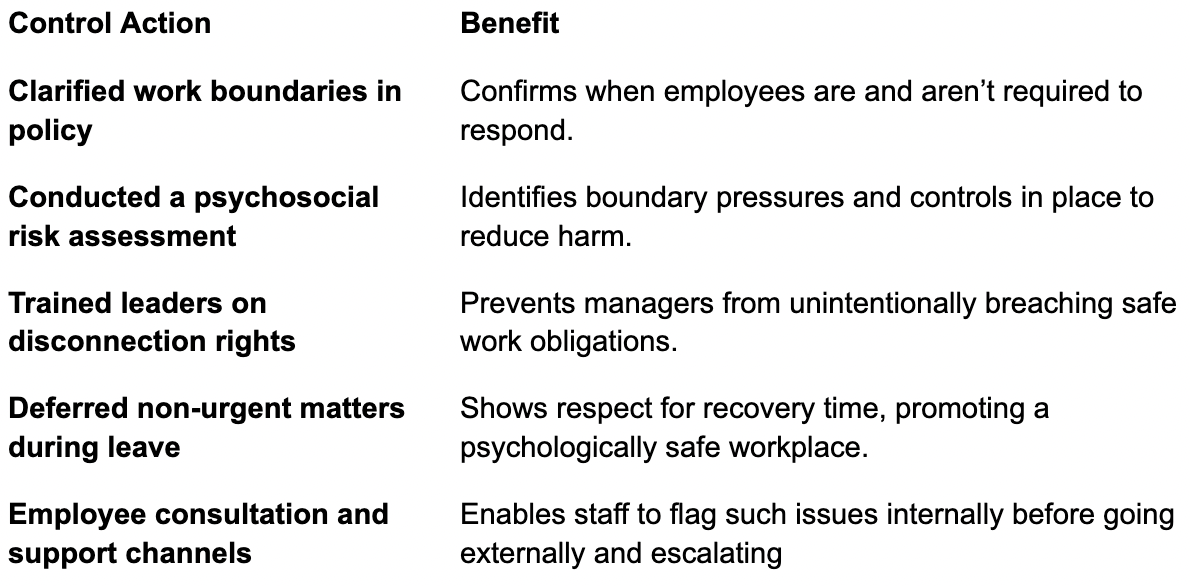.png)
A QLD teacher, on stress leave and not fit for work, was allegedly sent misconduct allegations during a period of leave and asked to respond. When she didn’t, she was dismissed, triggering what we believe to be the first public dismissal case citing Australia’s new right to disconnect laws.
Key facts
- A teacher has alleged:
- She was on leave due to work-related stress and had notified the school she was unfit for work.
- During the school holidays, when she was not required to work, the school sent her serious misconduct allegations.
- She was instructed to respond to the allegations during that period.
- She did not respond while on leave.
- The school terminated her employment.
- She is now suing for $780,000, claiming unfair dismissal and citing the right to disconnect laws.
- This is believed to be the first public legal case invoking the right to disconnect as part of a dismissal claim.
What happens from here
As the case progresses, the organisation will need to prepare a defence that shows it acted fairly, lawfully, and in line with new workplace rights. Here are a few key elements that will be required in that defence:
- Clear policies outlining staff leave entitlements and the right to disconnect, including whether staff are expected to respond while on approved leave to certain matters.
- Documented communication showing how and when misconduct allegations were delivered, and whether the teacher was given a fair chance to respond.
- Consideration of mental health - particularly any steps taken to adjust the process in light of the teacher’s reported stress and unfitness for work.
- Evidence of psychosocial risk controls, particularly including whether job demands and organisational justice were assessed and managed appropriately.
- Procedural fairness, such as whether the teacher was consulted and treated in a way that respected legal and psychological obligations.
If these elements are missing or poorly handled, the case could set a precedent for how right to disconnect laws interact with psychosocial safety and dismissal processes.
Potential hazards and controls
While we don’t have full visibility into the school’s internal processes, this case highlights several psychosocial hazards that may have been at play, and controls that, if in place, could help the organisation defend its actions.


How psych duties strengthen your case
Being compliant with psychosocial risk laws doesn't mean issues won’t arise, however it helps demonstrate that the employer took reasonably practicable steps to prevent harm.
If the employer has:
- Identified out-of-hours contact as a job demand hazard,
- Assessed its risk,
- Implemented controls (e.g. disconnection policy),
- And consulted with staff on boundaries,
They will be in a much stronger position to defend against claims or reduce liability.
We hope you found this insightful and as always, thank you so much for reading.
.png)
.png)
.png)